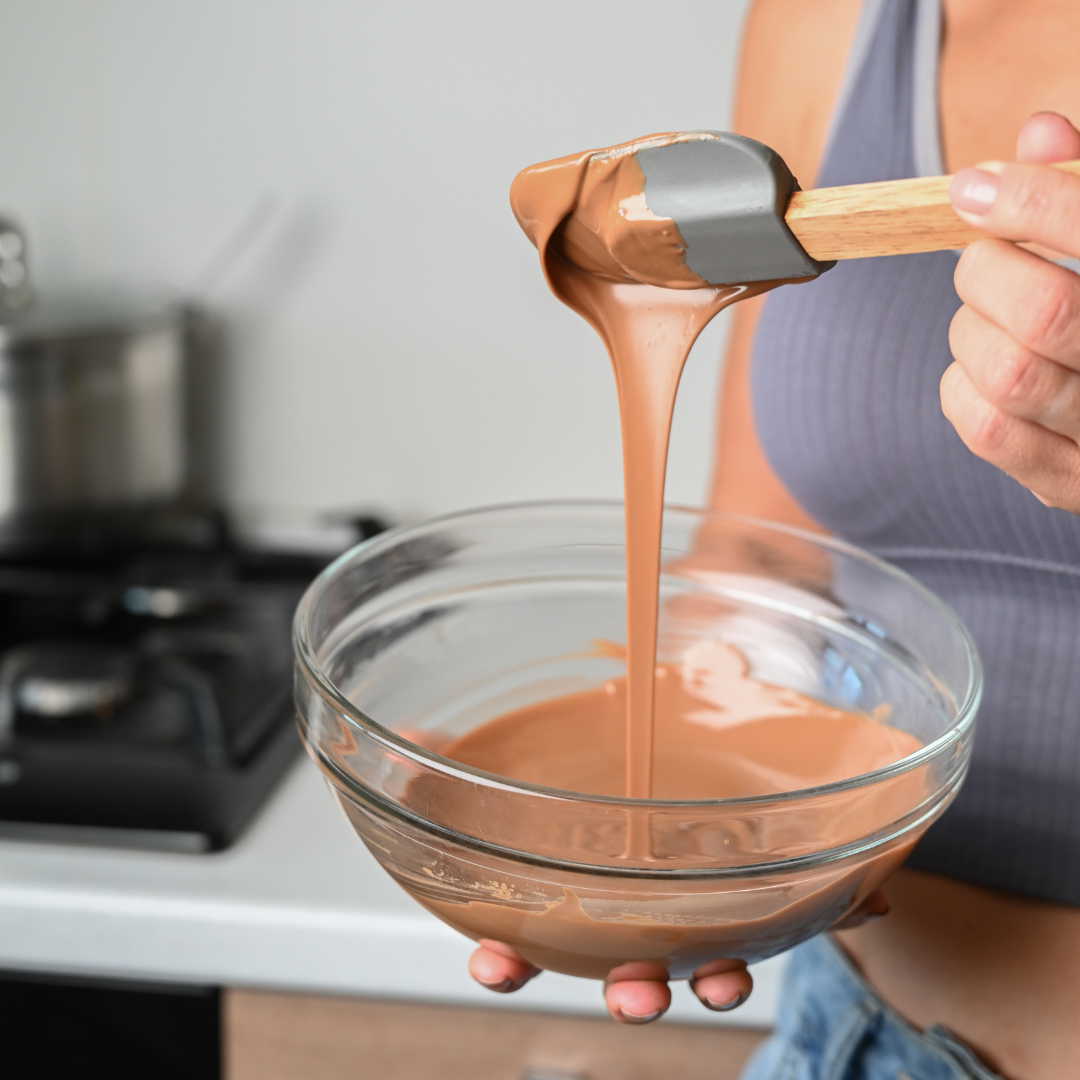Top 15 Best Tips for Tempering and Working With Chocolate

- Use High-Quality Chocolate: Start with high-quality chocolate, as it will be easier to temper and taste better in your final product.
- Chop Chocolate Uniformly: When melting chocolate, chop it into small, uniform pieces. This ensures even melting.
- Use a Double Boiler: Melt chocolate gently in a double boiler, which helps prevent scorching. If you don’t have one, use a heatproof bowl over a pot of simmering water.
- Avoid Water Contact: Water can cause chocolate to seize, so make sure your equipment is dry. Even a drop of water in your chocolate can ruin the tempering process.
- Use a Thermometer: Use a candy thermometer to monitor the chocolate’s temperature. For dark chocolate, aim for 115-120°F (46-49°C), and for milk or white chocolate, aim for 105-115°F (40-46°C).
- Stir Gradually: Stir the chocolate gently and constantly. It helps in even heating and prevents burning.
- Seed Method for Tempering: To temper, add small pieces of unmelted chocolate (seeds) to the melted chocolate and stir until they melt. This helps create stable crystals.
- Test the Temper: To check if chocolate is tempered, spread a small amount on a piece of parchment paper. It should set within a few minutes with a glossy finish and snap when broken.
- Work Quickly: Tempered chocolate begins to set relatively quickly, so work efficiently when dipping or coating items.
- Re-Tempering: If your chocolate starts to set or harden during use, gently reheat it to the correct working temperature without exceeding it. This can be done a few times.
- Maintain a Stable Room Temperature: Chocolate is sensitive to temperature fluctuations. Try to work in a room with a consistent, moderate temperature, ideally between 65-70°F (18-21°C).
- Use Silicone Spatulas: Silicone spatulas are excellent for stirring and scraping chocolate. They’re easy to clean and don’t retain moisture.
- Patience Is Key: When tempering, take your time to achieve the desired temperature. Rushing can lead to improper tempering.
- Clean Equipment: Ensure all your equipment, including molds and utensils, are completely dry and free from any residue or odors, which can affect the chocolate.
- Practice with Small Batches: If you’re new to chocolate work, practice with small amounts of chocolate to perfect your tempering skills before tackling larger projects.

In the video Joanne you mentioned the name of the melting chocolate as ‘Pesty?’
Would you use this tempering for the drizzling of chocolate on a Black Forest Cake?